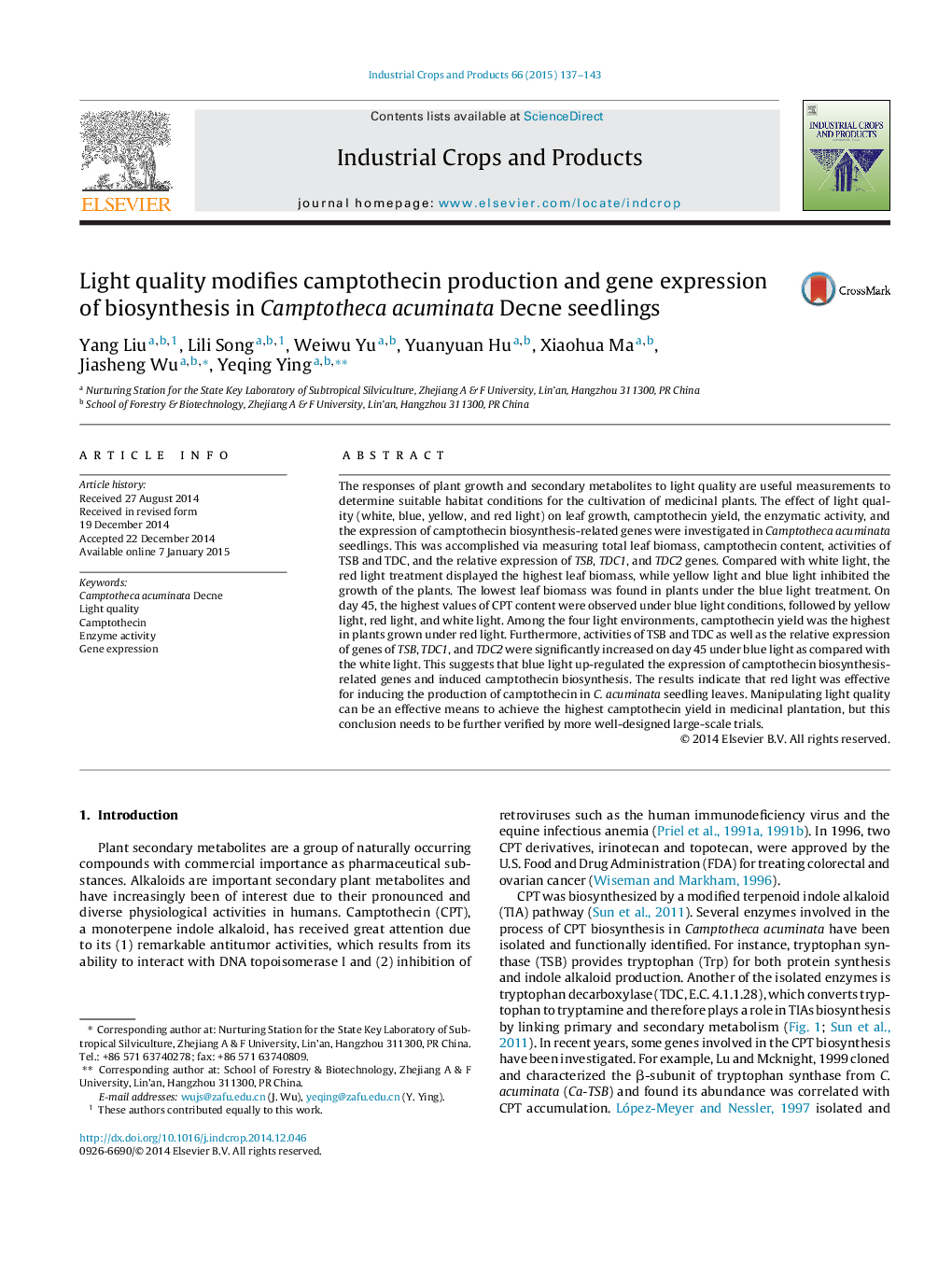| Article ID | Journal | Published Year | Pages | File Type |
|---|---|---|---|---|
| 4513197 | Industrial Crops and Products | 2015 | 7 Pages |
•The highest camptothecin content was observed under blue light on day 45.•Camptothecin yield was the highest under red light due to increasing growth.•Blue light induced tryptophan synthase and tryptophan decarboxylase activity.•Blue light induced tryptophan synthase and tryptophan decarboxylase gene expression.
The responses of plant growth and secondary metabolites to light quality are useful measurements to determine suitable habitat conditions for the cultivation of medicinal plants. The effect of light quality (white, blue, yellow, and red light) on leaf growth, camptothecin yield, the enzymatic activity, and the expression of camptothecin biosynthesis-related genes were investigated in Camptotheca acuminata seedlings. This was accomplished via measuring total leaf biomass, camptothecin content, activities of TSB and TDC, and the relative expression of TSB, TDC1, and TDC2 genes. Compared with white light, the red light treatment displayed the highest leaf biomass, while yellow light and blue light inhibited the growth of the plants. The lowest leaf biomass was found in plants under the blue light treatment. On day 45, the highest values of CPT content were observed under blue light conditions, followed by yellow light, red light, and white light. Among the four light environments, camptothecin yield was the highest in plants grown under red light. Furthermore, activities of TSB and TDC as well as the relative expression of genes of TSB, TDC1, and TDC2 were significantly increased on day 45 under blue light as compared with the white light. This suggests that blue light up-regulated the expression of camptothecin biosynthesis-related genes and induced camptothecin biosynthesis. The results indicate that red light was effective for inducing the production of camptothecin in C. acuminata seedling leaves. Manipulating light quality can be an effective means to achieve the highest camptothecin yield in medicinal plantation, but this conclusion needs to be further verified by more well-designed large-scale trials.
